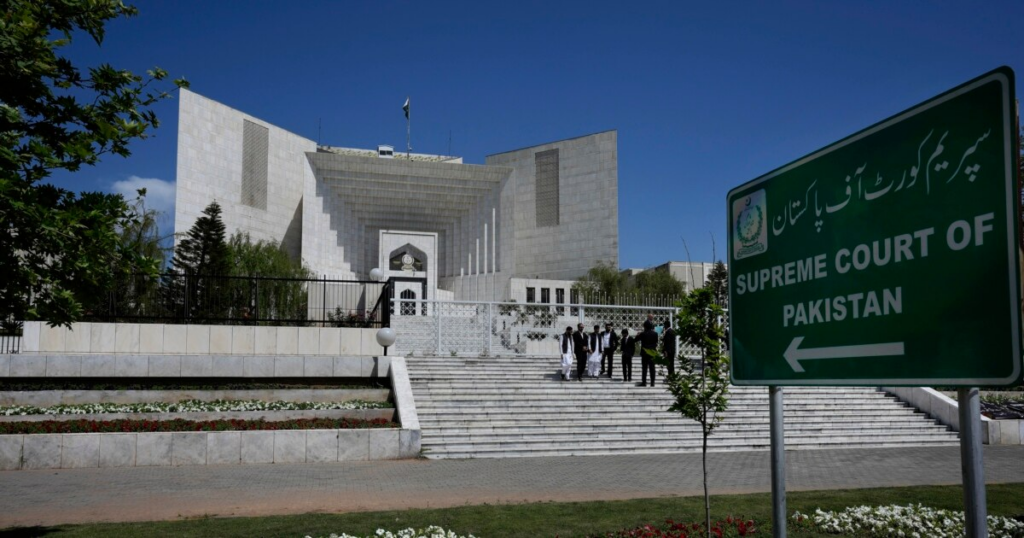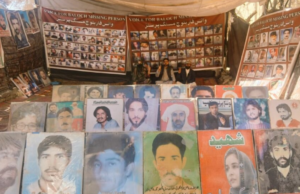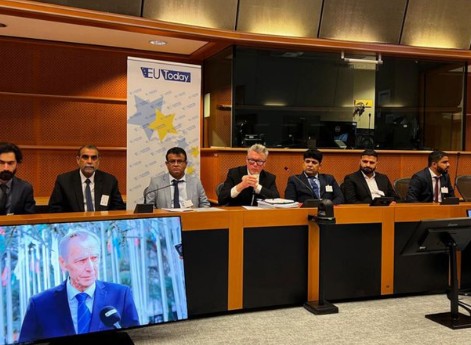
The Islamabad High Court (IHC) — once seen as a pillar of Pakistan’s judiciary — is now at the centre of an unprecedented institutional implosion.
Five of its judges, Justices Mohsin Akhtar Kayani, Babar Sattar, Tariq Mahmood Jahangiri, Saman Rafat Imtiaz, and Sardar Ejaz Ishaq Khan, have petitioned the Supreme Court of Pakistan under Article 184(3) of the Constitution, laying bare an internal conflict that has simmered for more than a year.
Their collective move — challenging administrative overreach, questioning the powers of the chief justice, and alleging mala fide actions — has turned the spotlight inward, exposing deep fractures within the judiciary itself.
The petitions, filed against the IHC, its Chief Justice Sardar Muhammad Sarfraz Dogar, and the Federation of Pakistan, accuse the court’s top administrative authority of undermining judicial independence.
The judges contend that the chief justice has unlawfully monopolised powers over bench composition, roster assignment, and case transfers — authority they argue should rest with the court as a whole under Articles 192 and 202 of the Constitution.
Their plea to the Supreme Court is stark: to declare that administrative powers cannot “trump judicial powers,” and to strike down the so-called “Doctrine of the Master of the Roster,” which they assert has been weaponised to marginalise dissenting voices within the bench.
This is not an isolated administrative dispute; it is a public unmasking of a judiciary at war with itself.
The petitions allege that the formation of the IHC’s administration committees and the approval of its new “Practice and Procedure Rules, 2025” were carried out by an illegally constituted body.
According to the petitioners, the process not only breached constitutional provisions but also reflected a broader attempt to silence judges critical of recent administrative and political decisions.
Their appeal to the apex court seeks the nullification of these rules and demands that judicial oversight of the district courts — a constitutional duty under Article 203 — be restored to its rightful, collective authority.
At the heart of this conflict is Chief Justice Dogar’s controversial elevation. His transfer from the Lahore High Court (LHC) to the IHC in February 2025 — and subsequent promotion as chief justice — triggered a wave of protest from senior IHC judges.
The five petitioners had opposed his appointment months in advance, warning that it would violate established norms and erode the principle of seniority that traditionally governs judicial promotions.
Their warnings went unheeded. Dogar’s arrival disrupted the court’s seniority structure, relegating Justice Kayani, previously the senior puisne judge, to a subordinate administrative role.
The changes to the IHC’s administration committee — which replaced the traditional trio of the chief justice, senior puisne judge, and one senior judge with the chief justice and two of his nominees — cemented Dogar’s dominance and deepened the resentment among senior judges.
The tensions did not remain confined to administrative reshuffling. They spilled into open judicial conflict.
Judges began issuing contradictory orders, benches overturned each other’s rulings, and the registrar’s office became a battleground for influence.
Cases were reassigned without explanation. Orders vanished from public databases. The internal communication of the court became a tool of exclusion rather than coordination.
In one instance, Justice Babar Sattar accused the registrar of deliberately defying court orders by not listing his cases, while Justice Ejaz Ishaq Khan charged the chief justice’s office with “sabotaging” his authority after his cause list was cancelled during his leave.
These disputes soon took on a more corrosive dimension — personal distrust. In March and April, as cases involving political figures like former prime minister Imran Khan moved between benches, suspicions grew that the transfers were being manipulated for political convenience.
When Justice Sattar refused to acknowledge a division bench’s suspension of his order, he directly challenged the authority of the chief justice.
Other judges publicly questioned whether the “Master of the Roster” doctrine had turned into a cloak for selective justice.
By May, the court’s dysfunction had reached a level where judges openly disregarded each other’s authority in courtroom proceedings — an unthinkable spectacle for a constitutional court.
This rupture did not emerge in a vacuum. The Islamabad High Court has been riven with discord since March 2024, when six judges — including five of the current petitioners — wrote an explosive letter to the Supreme Judicial Council (SJC) alleging interference by intelligence agencies in judicial affairs.
The letter described incidents of intimidation, surveillance, and coercion — including the abduction and torture of judges’ relatives.
The revelations triggered calls for an inquiry, leading then–Chief Justice of Pakistan Qazi Faez Isa and Prime Minister Shehbaz Sharif to agree on a commission. But the commission never materialised.
Former CJP Tassaduq Hussain Jillani, appointed to lead it, recused himself, citing potential bias.
The matter was left to the Supreme Court, which took suo motu notice but never delivered closure. The failure to resolve those allegations of interference created the mistrust now consuming the judiciary from within.
By late 2024, the passage of the 26th Constitutional Amendment further destabilised the judicial hierarchy.
The amendment allowed the Judicial Commission of Pakistan (JCP) to appoint high court chief justices from among the five senior-most judges, effectively diluting the seniority principle.
It was under this new framework that Dogar’s transfer and elevation were justified — a technical legality that did little to calm perceptions of manipulation.
For many in the judiciary, Dogar’s appointment symbolised not reform but the institutionalisation of executive influence through procedural disguise.
As the months unfolded, every administrative change deepened the fault lines. The removal of Justice Saman Rafat Imtiaz as the competent authority for harassment complaints — after she initiated an inquiry into a complaint filed against Chief Justice Dogar — was perceived as another retaliatory act.
The sidelining of Justices Jahangiri and Ishaq through roster manipulation, and the suspension of Justice Jahangiri’s judicial powers over a degree controversy, further inflamed tensions.
The timing of these actions, coupled with the judges’ consistent marginalisation from key committees, created a perception of systematic targeting of dissent.
The internal conflict now stands before the Supreme Court not merely as a legal question but as a constitutional crisis.
The petitioners are not challenging the government or the executive; they are challenging the institutional structure of their own court. Their plea for the restoration of collective decision-making and the rejection of unilateral authority strikes at the core of judicial governance in Pakistan.
It also poses an uncomfortable question: what happens when those entrusted with interpreting the Constitution lose faith in their own institution’s integrity?
The IHC’s turmoil underscores a larger decay within Pakistan’s legal system — one defined by personal rivalries, political interference, and eroding norms.
When judges publicly accuse one another of illegality, when rosters are used as weapons, and when judicial independence becomes a factional claim rather than a shared principle, the institution’s moral authority disintegrates.
The spectacle of five sitting high court judges seeking relief against their own chief justice before the Supreme Court marks an unprecedented moment in Pakistan’s judicial history.
It exposes not only administrative dysfunction but an existential crisis in the judiciary’s credibility. What was once a temple of constitutional interpretation now resembles a fractured house, where justice is no longer blind — but divided.
The Islamabad High Court, instead of being the guardian of the rule of law, has become its own courtroom drama — a mirror reflecting the institutional decay of Pakistan’s governance. And as this internal battle unfolds in the Supreme Court, the real casualty remains the one entity that can least afford another wound: public faith in the judiciary itself.






